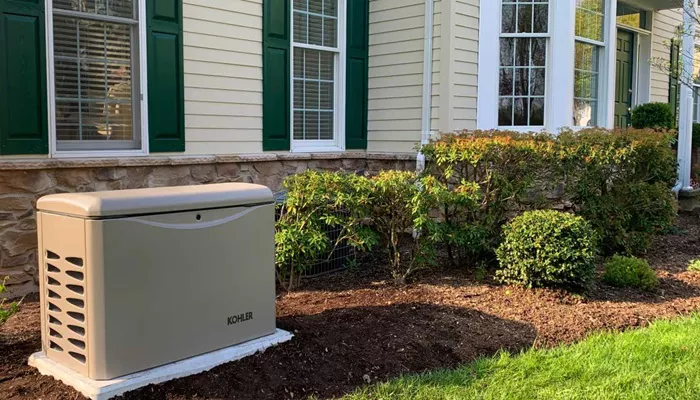Portable home generators are essential backup power sources during outages, providing electricity to keep appliances running. But how exactly do they work? This article breaks down the mechanics, components, and operation of portable generators in simple terms while incorporating professional electrical knowledge.
Basic Principle of a Portable Generator
A portable generator converts mechanical energy into electrical energy through electromagnetic induction. This process involves a fuel-powered engine turning a rotor inside an alternator, creating an electric current.
Key Components
Engine : Burns fuel (gasoline, propane, or diesel) to produce mechanical energy.
Alternator : Converts mechanical energy into electricity.
Voltage Regulator : Stabilizes output voltage for safe appliance use.
Fuel System : Stores and supplies fuel to the engine.
Cooling & Exhaust System : Prevents overheating and expels fumes.
Control Panel : Houses outlets, switches, and monitoring gauges.
How the Engine Powers the Generator
The engine is the heart of the generator. When fuel combusts, it moves pistons, rotating a crankshaft connected to the alternator.
Types of Engines
OHV (Overhead Valve) Engines : More efficient, durable, and quieter.
Side-Valve Engines : Simpler but less efficient.
Most portable generators use four-stroke engines, which operate in four phases:
Intake Stroke : Air-fuel mixture enters the cylinder.
Compression Stroke : The piston compresses the mixture.
Power Stroke : Spark plug ignites fuel, forcing the piston down.
Exhaust Stroke : Burnt gases are expelled.
This cycle repeats, keeping the alternator spinning.
The Alternator: Generating Electricity
The alternator consists of two main parts:
Stator (Stationary Coils) : Wire windings that produce electricity when exposed to a moving magnetic field.
Rotor (Rotating Magnet) : Creates a magnetic field as it spins inside the stator.
How Electromagnetic Induction Works:
- The engine spins the rotor, generating a rotating magnetic field.
- This field induces an alternating current (AC) in the stator windings.
- The voltage regulator adjusts the output to a stable 120V or 240V.
- Portable generators typically produce single-phase AC power, suitable for household appliances.
Voltage Regulation & Power Output
Voltage spikes can damage electronics. The voltage regulator ensures a steady flow by:
- Adjusting the magnetic field strength in the rotor.
- Maintaining a consistent voltage (usually 120V or 240V).
Wattage & Load Capacity
Generators are rated in watts (W) or kilowatts (kW).
Starting Watts : Extra power needed when motors start (e.g., refrigerators).
Running Watts : Continuous power required to keep devices running.
Example: A 5,000-watt generator can power:
- Refrigerator (700W running, 2,200W starting)
- Lights (100W)
- TV (200W)
- Sump (1,000W running, 2,300W starting)
Caution: Overloading can damage the generator or connected devices.
Fuel Systems & Efficiency
Portable generators run on:
Gasoline : Common but less stable for long-term storage.
Propane : Cleaner burning, stores longer, but less energy-dense.
Diesel : More efficient for heavy-duty use but louder.
Fuel Consumption
A 5,000W gasoline generator may use 0.5–1 gallon per hour at 50% load.
Efficiency Tips
- Use eco-mode if available.
- Match generator size to your power needs.
Cooling & Exhaust Systems
Generators produce heat and toxic fumes, requiring:
Air Cooling : Fans circulate air to prevent overheating.
Oil Cooling : Some models use oil for better heat dissipation.
Mufflers : Reduce engine noise.
Safety Note: Always operate generators outdoors to avoid carbon monoxide poisoning.
Control Panel & Outlets
The control panel includes:
AC Outlets : For standard 120V plugs.
240V Outlet : For heavy-duty appliances like dryers.
Circuit Breakers : Protect against overloads.
Hour Meter : Tracks usage for maintenance.
USB Ports : For charging small electronics.
Safety Tips for Using a Portable Generator
Never run indoors : Deadly carbon monoxide can build up.
Use heavy-duty extension cords : Rated for outdoor use.
Ground the generator : Prevents electric shocks (follow local codes).
Allow cooling before refueling : Prevents fires.
Perform regular maintenance : Change oil, clean filters, and check spark plugs.
Maintenance for Longevity
To keep your generator running smoothly:
- Check oil levels before each use.
- Replace air filters every 100 hours.
- Drain fuel if storing for months.
- Test-run monthly to prevent carburetor clogs.
Conclusion
A portable home generator works by converting fuel into mechanical energy, which is then transformed into electricity via electromagnetic induction. Understanding its components—engine, alternator, voltage regulator, and cooling systems—helps in proper operation and maintenance. Whether for emergencies or outdoor use, choosing the right generator and using it safely ensures reliable backup power when needed. By following these guidelines, you can maximize efficiency, extend lifespan, and keep your home powered during outages.

